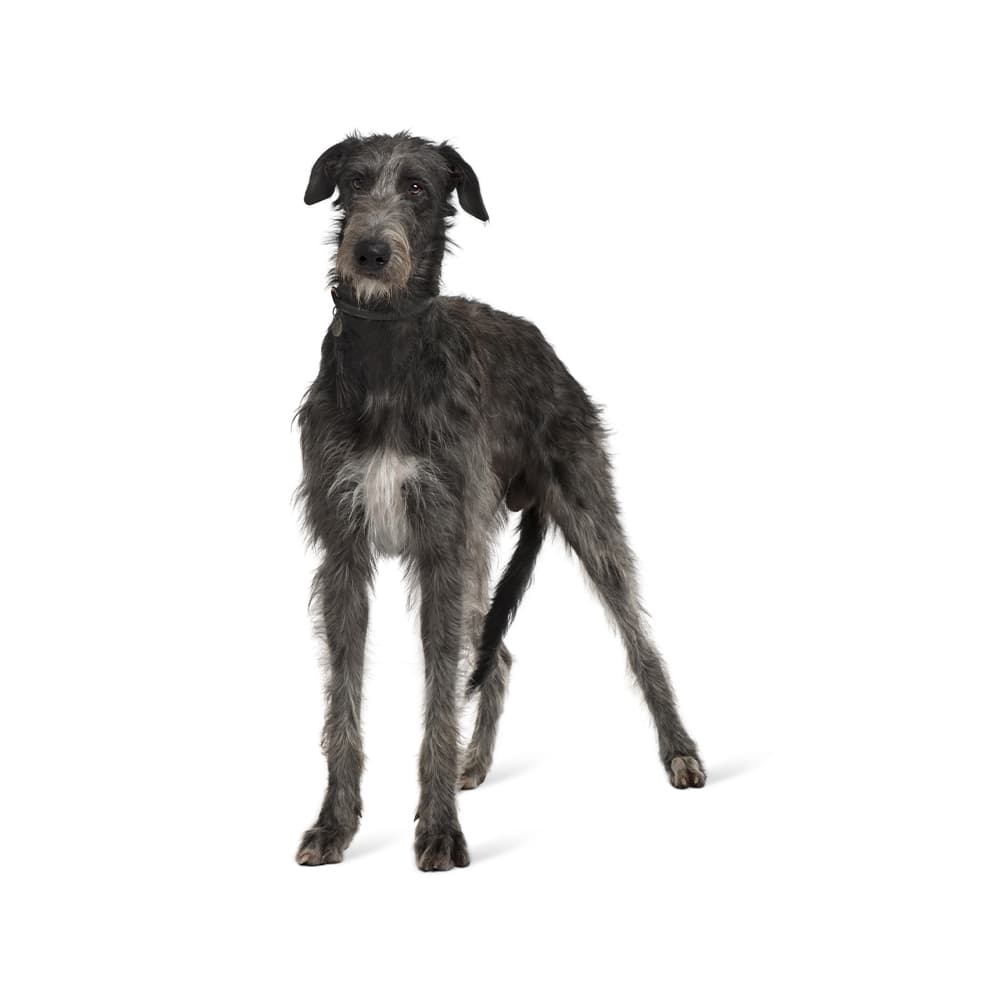Discover your dog's connection to this breed and 200+ others


Discover your dog's connection to this breed and 200+ others



The Irish Wolfhound is one of the oldest dog breeds, with a history dating back to ancient times. Bred in Ireland, their ancestors were likely brought to the island by the Celts around 300 BC. They were originally used for hunting large game, including wolves and Irish elk. The breed's numbers declined over the centuries due to factors like warfare and changes in hunting practices. In the 19th century, efforts were made to revive the breed, leading to its preservation and popularity worldwide.
The Irish Wolfhound is a large and deep chested breed that can suffer from bloat, also known as gastric dilation volvulus (GDV). This is a life-threatening condition that can come on suddenly, so it’s important to know the warning signs and get an affected dog immediate veterinary care. They may be affected by pneumonia, heart conditions such as cardiomyopathy, liver shunt, and certain cancers such as osteosarcoma. An electrocardiogram (EKG or ECG) is recommended as part of their regular annual exams. Other conditions from which they may suffer include von Willebrand Disease, startle disease, degenerative myelopathy, progressive retinal atrophy, megaesophagus, canine hip dysplasia, and osteochondritis dissecans.
Irish Wolfhounds are gentle giants and are known for their kind and friendly demeanor. Despite their imposing size, they are typically good-natured, patient, and affectionate with their families. They are not aggressive by nature and can be quite sociable with other dogs and pets. Due to their history as hunters, some Wolfhounds may still retain a strong prey drive, so early socialization is crucial.
A canine genetic lineage is a group of individuals or entire breeds that descended from common ancestors predating modern breed formation. Often these lineages are associated with a ‘type’ of dog with a unique historical working role and associated behaviors (e.g., herding, scent hunting, etc.).
Sighthound breeds date back thousands of years, they were bred for speed and agility. The physical characteristics of sighthounds include long lean bodies with a deep chest and long legs and allow them to run fast over short distances. Sighthounds are excellent hunters for fast-moving prey while using their sight rather than scent to find and follow their prey. They tend to be independent, but also gentle and affectionate with their families.
Example breeds with ancestry from this lineage include Greyhound, Irish Wolfhound, and Whippet.
The Irish Wolfhound is sometimes referred to as the "Cú Faoil" in Irish, which translates to "hound of Ireland."
The Irish Wolfhound holds the record for being one of the tallest dog breeds in the world. Some individuals can stand over 32 inches (81 cm) at the shoulder.
In the past, Irish Wolfhounds were often given as gifts to royalty and dignitaries. They were highly prized for their noble appearance and loyalty.
The Irish Wolfhound is considered a symbol of Ireland and is recognized as the national dog breed of the country.
An Irish Wolfhound puppy can weigh nearly 100 pounds.
https://www.akc.org/dog-breeds/irish-wolfhound/
https://www.ukcdogs.com/irish-wolfhound https://www.fci.be/en/nomenclature/IRISH-WOLFHOUND-160.html
https://www.petmd.com/dog/breeds/c_dg_irish_wolfhound
https://www.pawprintgenetics.com/products/breeds/66/
Recommended by top vets with decades of experience
21 breeds
64 genetic health markers
50 genetic trait markers
